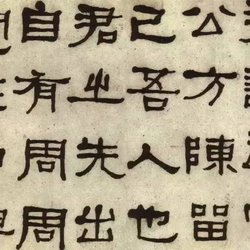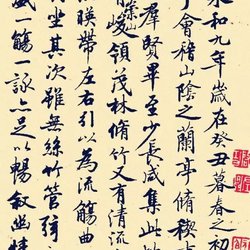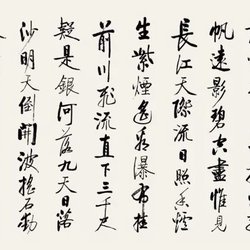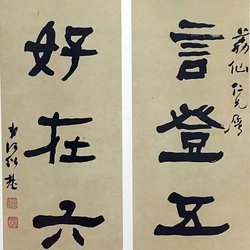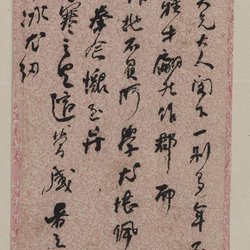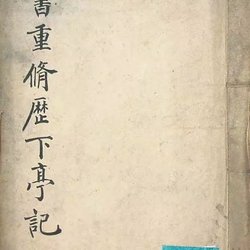"He Shaoji's official script ranks first among all styles of calligraphy. Although his level is not as high as that of Yi Bingshou, he is more vivid than Guifu and more practical than Jinnong. In the official family, he has to occupy a seat." This shows the importance of He Shaoji's official script at that time.
He Shaoji (1799-1873), a native of Daozhou (now Daoxian County), Hunan, was also called He Daozhou in his old life. His given name was Zizhen, his nickname was Dongzhou, his nickname was Dongzhou layman, and his later nicknames were Jisou and Yuansou. He is good at traveling, has a rich collection, and is proficient in writing and textual research. He is the author of "Annotations and Refutations of Shuowen Duan", "Golden Stone Postscript of Dongzhou Thatched Cottage", "Collected Poems of Dongzhou Thatched Cottage", etc., and has a biography in "Biographies of Qing History". He Shaoji was a master with extremely comprehensive artistic attainments and was proficient in poetry, literature, painting, and epigraphy.
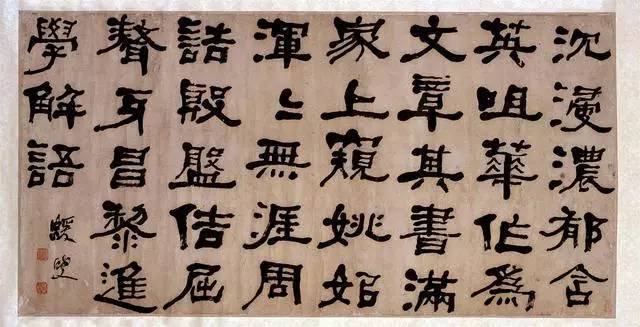 He Shaoji's official calligraphy works
He Shaoji's official calligraphy works
As a calligrapher with many talents, He Shaoji's achievements in other fields are often ignored because the title of his book is too heavy. There are not many official script works of He Shaoji handed down from generation to generation. Among them, the long official script "Lei Ye" collected by the Liaoning Provincial Museum has a broad and smooth structure, with a handsome and elegant style throughout, and rich and vigorous stipples. It is a typical representative calligraphy style of He's family. But has He Shaoji’s official calligraphy style always been like this? Or has there been a change? Obviously any art has its own development process, and the same is true for He Shaoji's official script. The "Lu Jun Stele" copied by Shi Qing when he was forty-two years old is quite different from this. The chapters are of the same size, and there are obvious contrasts between characters. However, the official script of "Yilin" collected by the Palace Museum, written by He at the age of 62, has a different style. It can be seen from this that the formation of He Shaoji's official script style also went through a process of continuous exploration.
 He Shaoji's cursive calligraphy works
He Shaoji's cursive calligraphy works
He Shaoji lost his father at a young age and his family was very poor. The burden of the family fell on his mother Liao. Shortly after the birth of his third brother He Shaoqi, the Liao family took their three sons to live with their uncle Liao Xianrui. Although his family was not wealthy, Liao Xianrui was also a well-known scholar in the local area and had a large collection of books. This laid a good foundation for Shaoji's future study and study habits.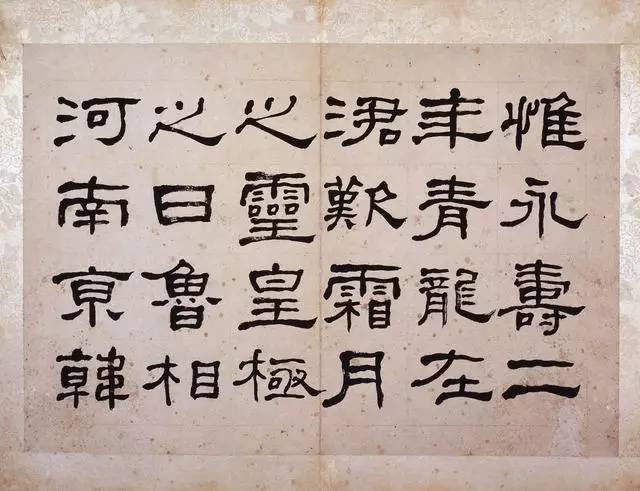 He Shaoji's official script of the Han Dynasty
He Shaoji's official script of the Han Dynasty
Among the handed down works of He Shaoji, official script works from his early years are not common. When He Shaoji was 42 years old, he wrote "Lu Jun Stele" for Yang Duo, which is the earliest official script work of his that has been seen so far. He wrote a postscript: "... Shi Qing searched for my humble book, but I haven't seen the inscription for almost a year. I am a beginner at dividing books. Just because I don't despise me, I try to write this paper to serve the government and to help me remember each other. Ji Bing Ji."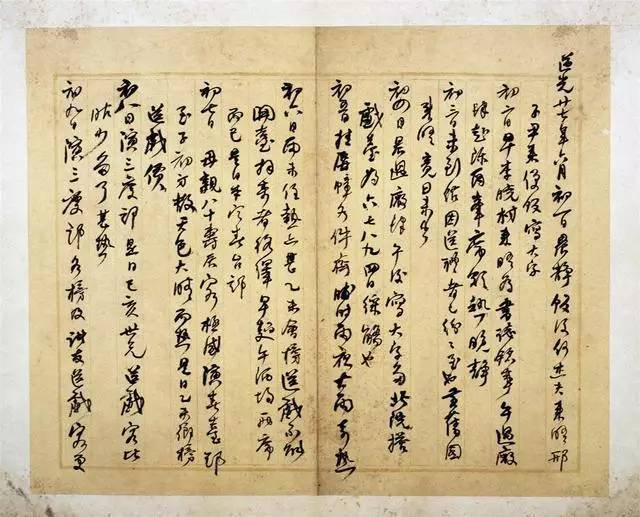 He Shaoji's diary
He Shaoji's diary
In addition, Zeng Guofan also recorded in his "Diary" in the 22nd year of Daoguang: "Zizhen now writes Li characters, and writes seven or eight pages every day, and this year it has already reached a thousand pages. Recently, he also revised the "Han Shu" Gai Zhenzhi is good at five things: first, he is good at "Yi Li"; second, he is familiar with "Han Shu"; third, he is good at "Shuowen"; fourth, he is good at poetry in various styles; fifth, he is good at calligraphy. These five things are all intended to be passed down to the future. From my perspective, these three are not very precise, and I don’t know what the shallow and deep are. If they are written in words, they will undoubtedly be passed down through the ages." Zeng Guofan's "Diary" The record is the earliest record we have seen so far about He Shaoji's practice of official script. Before that, although there were many records of He's collection, visits to Han steles and other activities, the records of He Shaoji's practice of official script were as few as stars. Although it is said that He Shaoji must have involved the official script in the process of literacy, judging from the works and records handed down from ancient times, it is indeed at this time that He really began to pay attention to the official script and study it as a daily lesson.
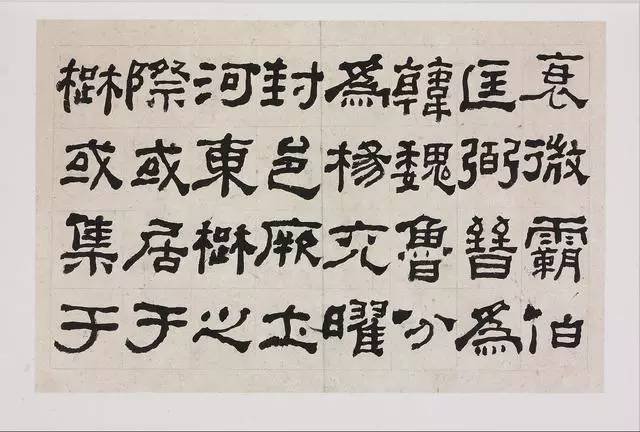
He Shaoji's official script of the Han Dynasty
In addition to practicing the official script, He Shaoji also conducted a lot of textual research and inscriptions on official script, which are all included in He Shaoji's "Dongzhou Caotang Poetry Notes", such as "Han Han's Postscript" written in the 22nd year of Daoguang (1842). "Rubbings of Situ's Remaining Edition", "Stele of Commitments of Pei Cen, Governor of Dunhuang", postscripts of the 24th year of Daoguang's reign (1844), "Siming Edition of Zanghuashan Stele in Chongpu Mountain", "Shi Chen's Stele of Confucius and Empress", postscript "Shi Chen's Empress" "Song Dynasty Rubbings of Stele", textual research articles such as "Double Hook Edition of Liu Xiong Stele of Jiang Family" in the 26th year of Daoguang (1846), "Fan Min Stele" and "Gao Yi Stele" in the fourth year of Xianfeng (1854), etc.
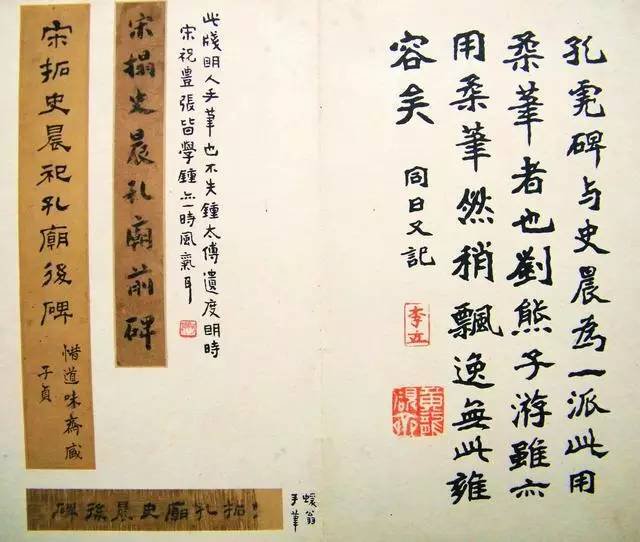
He Shaoji's inscribed historical monument
What is even more interesting is that He Shaoji also had economic interests in his calligraphy learning. From He Shaoji’s inscription "The Huashan Stele of the Four Ming Dynasties is composed by Chongpu Mountain": In the 25th year of Daoguang (1845), Ruan Fu used the Taishan Qin Stele The rubbings and the Song rubbings of "Huashan Stele" were deposited in silver. Ruan Phuc was a famous collector at that time and had a rich collection. He was the only one who chose these two rubbings, which can also explain He Shaoji's love for official script from another aspect.

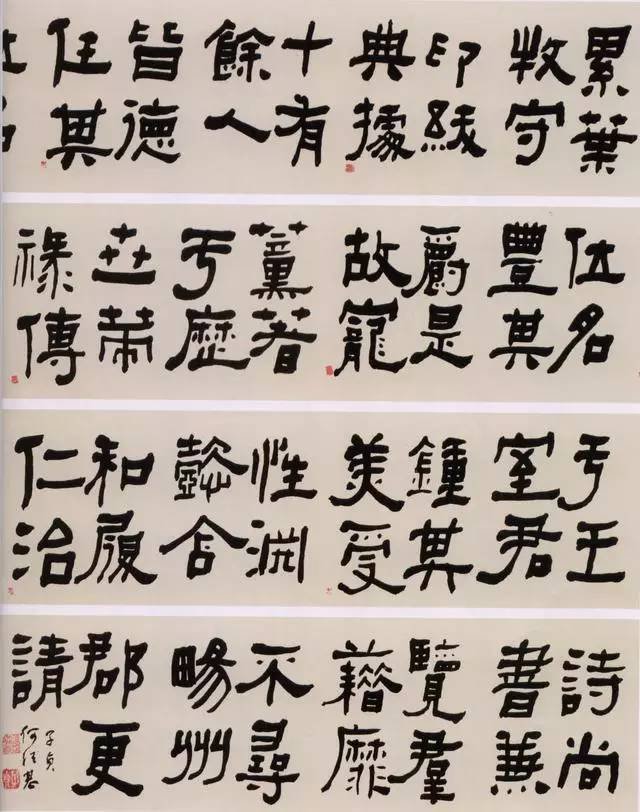
He Shaoji's official calligraphy works
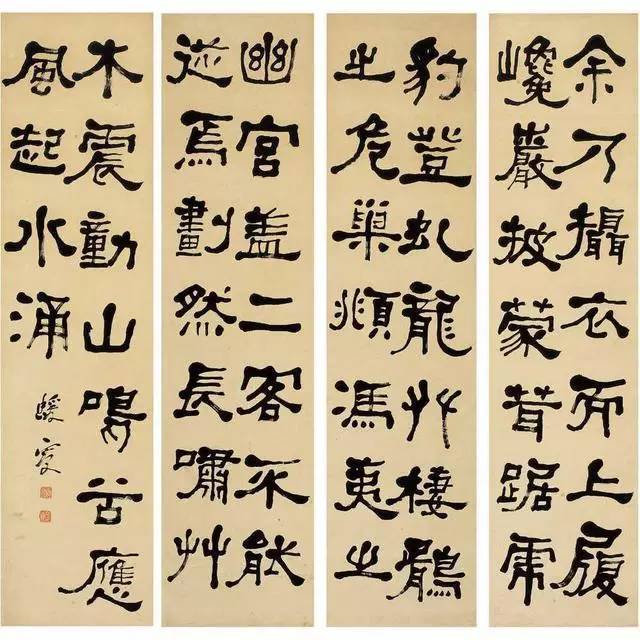
He Shaoji's official calligraphy works


He Shaoji's official calligraphy works

